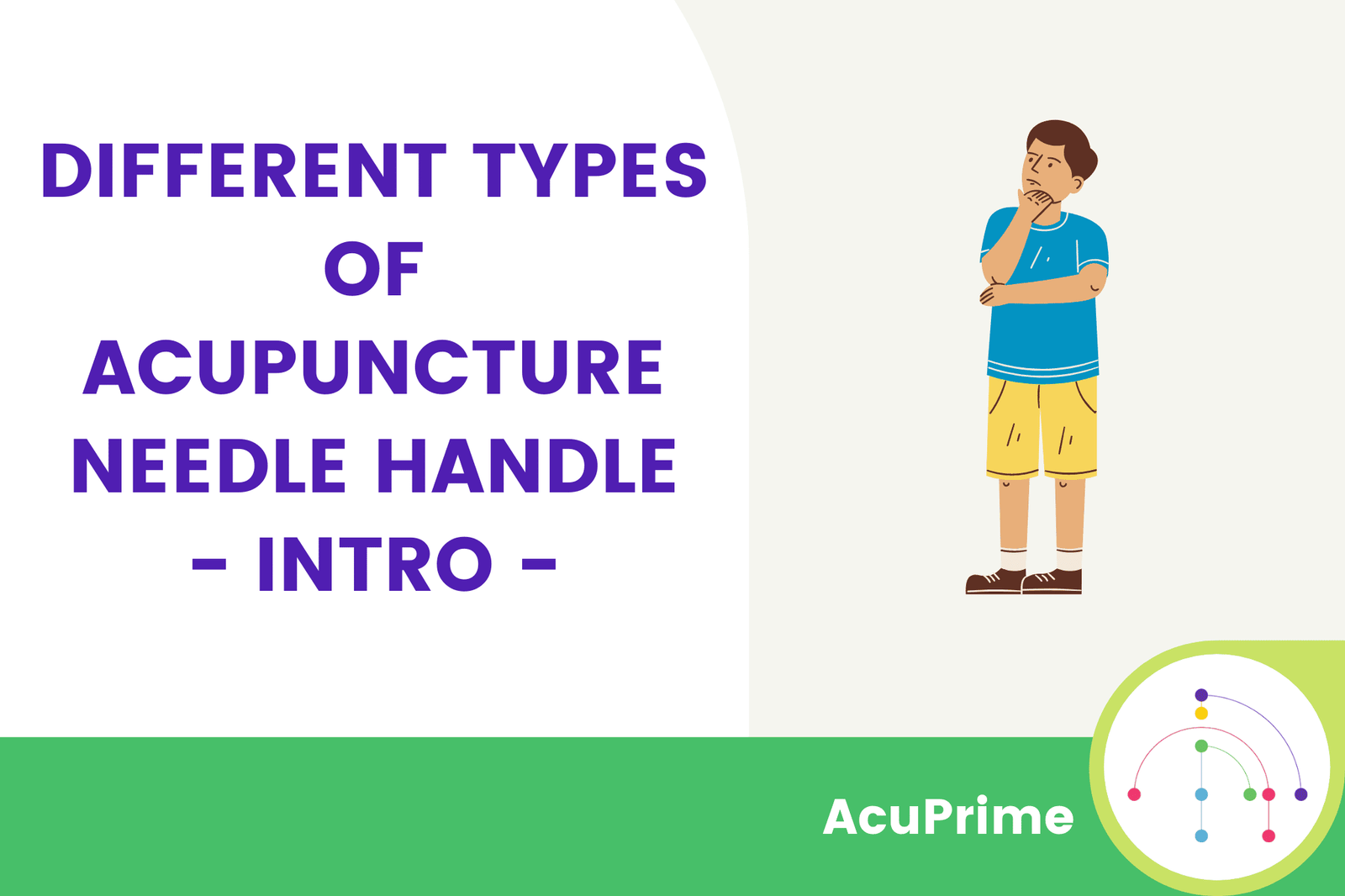In antiquity, acupuncture was performed using sharp bones or stones. Now, these objects are replaced with small, sharp needles. In Traditional Chinese Medicine, acupuncture works on the principle of energy flow in the body, called Qi, along the energy flow channels, known as meridians. Acupuncture needles are used to stimulate acupuncture points that are situated along with the meridian systems. With up to 12 major meridian channels and over 400 acupuncture points, this technique aims to treat numerous disorders by balancing the energy flow within the body. In Western medicine, acupuncture is used to release tension via trigger points and treat pain.
The main parts of an acupuncture needle include a handle, root, body, tail, and tip. The root of the needle connects the body and handle. The body and tip are inserted into the acupuncture points while the handle and tail are used to manipulate the needles and conjugated with other healing techniques. Different acupuncture needle handles are used for different types of acupuncture techniques.
Copper Handles
Acupuncture needle handles made with copper are known for their flexibility and the ease with which acupuncturists can manipulate them. Copper is a good conductor of heat and electricity, therefore copper-handled acupuncture needles are ideal for moxibustion and electro-acupuncture. Acupuncture needles with copper handles are much used among the traditional acupuncturists who follow the principles of ancient Chinese medicine. These acupuncture needle handles are the best option when shallow stimulation is required and/or heat and electric current are involved. Drawbacks of copper acupuncture needle handles include tarnishing upon long-term storage and buckling of needles under high pressure.
Plastic Handles
Advancement in technology led to the development of plastic-handled acupuncture needles. Plastic acupuncture needle handles are not only easier to manufacture but also easy to use, particularly for inexperienced acupuncture practitioners. Compared to metal handles, plastic handles are lighter in weight, more rigid, and highly resistant to buckling under pressure. Another benefit of such acupuncture needle handles is that they can be colour-coded to facilitate the entire process. However, plastic acupuncture needle handles are not an option when considering electro-acupuncture and moxibustion.
Metal Tube Handles
These handles are used in Japanese acupuncture needles and are made of inflexible metal tube that is grouted into the acupuncture needle. A major advantage of using metal tube acupuncture needle handles is that these can accommodate moxa products for moxibustion as well as facilitate electric stimulation as metal conducts heat and electricity. Unlike copper acupuncture needle handles, metal tube handles do not have a loop.
Korean-Style Spring Handle Without Loop
Similar to metal tube handles, these Korean-style acupuncture needle handles are also loopless. The spring handles are characterised by the coiling of a stainless steel wire to form a hollow spring coil. This spring handle is then mechanically adhered to the acupuncture needle. Since metal is a good conductor of heat and electricity, these acupuncture needle handles can be used for both moxibustion and electric stimulation. The stainless steel composition of the acupuncture needle handles makes them resistant to tarnish. However, these handles are relatively more rigid which makes their manipulation a difficult process for acupuncturists.
The acupuncture needle handles are employed for manipulating the acupuncture needles and facilitating the processes of electro-stimulation and moxibustion. Metal-based acupuncture needle handles are good conductors of heat and electricity. In the case of copper-handled acupuncture needles, the moxa products or electrodes are placed on the needle loops. On the contrary, Korean and Japanese acupuncture needle handles are loopless and require the moxa products to be placed in hollow metal tubes.
Ready to choose your acupuncture needles? Check out our full range here.








